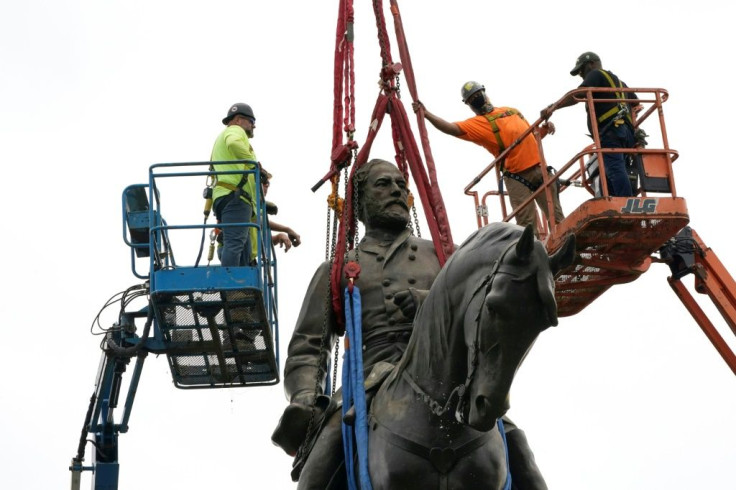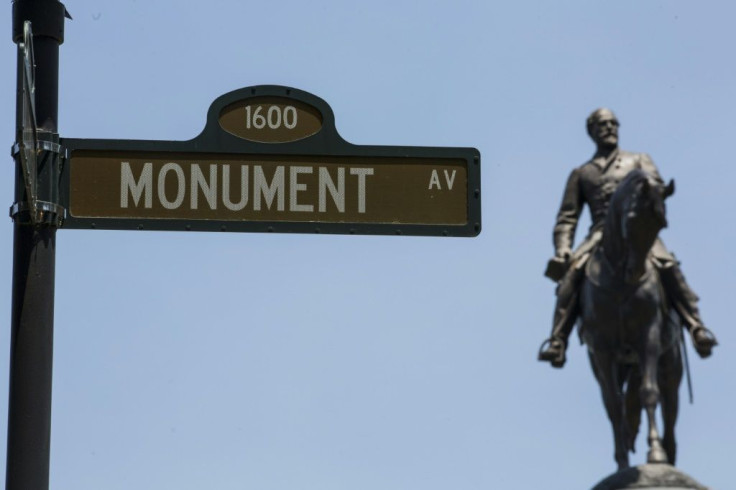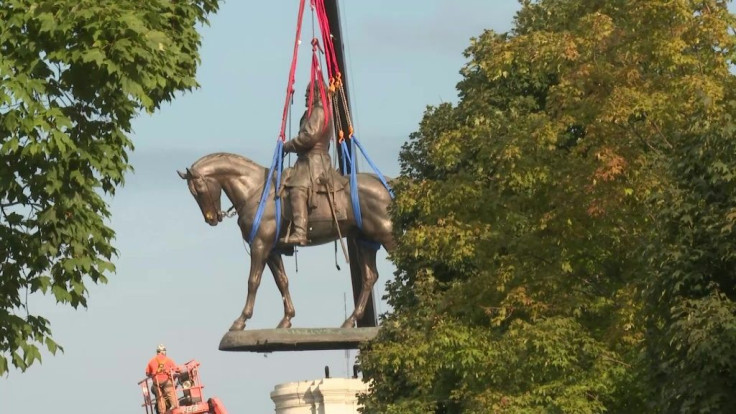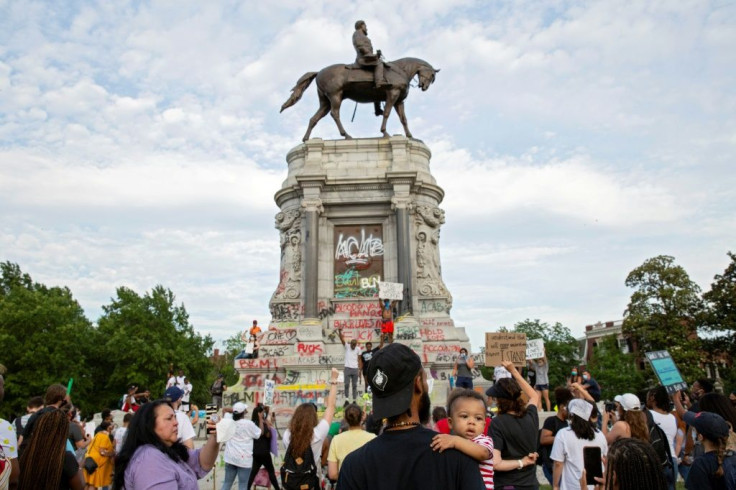Flashpoint US Statue Of Confederate General Removed In Richmond
A towering statue of a Confederate general that became a focal point of protests for racial justice was removed Wednesday in Richmond, the Virginia city that served as the capital of the pro-slavery South during the American Civil War.
The bronze statue of General Robert E. Lee, who commanded the Army of Northern Virginia during the bloody 1861-65 conflict, was lifted off its 40-foot (12-meter) granite pedestal as hundreds of onlookers cheered under tight security.

"Hey, hey, goodbye," the crowd chanted as the 21-foot-tall statue was slowly lowered to the ground on straps to be carted away in pieces on a flatbed truck.
A municipal worker on a cherry picker waved his arms and pumped his fist in the air as the statue was pried off its pedestal, which has been daubed with painted slogans such as "Black Lives Matter."

Muhammad Abdul-Rahman, a 56-year-old community organizer, was among those celebrating the taking down of the statue, which has dominated Richmond's Monument Avenue for more than 100 years.
"It was designed to demonstrate, erected to say that the white man will be supreme in all aspects of life -- culture, politics, economics, sports, music," Abdul-Rahman said. "And it coming down removes that stain on Virginia's history, on American history and on the history of our city."

Unveiled in 1890, the giant figure of Lee mounted on a horse is among hundreds of Confederate monuments in the United States that are widely considered symbols of racism.
The Lee statue became a rallying point for protests following the May 2020 death of George Floyd, a Black man murdered by a white police officer in Minnesota.
Virginia Senator Tim Kaine, a Democrat, called its removal a "powerful moment." "A symbol of injustice and pain is removed at long last," he tweeted.

Virginia Governor Ralph Northam, also a Democrat, said the statue will go into storage, and he will "work with the community to determine its future."
Mayor Levar Stoney said Richmond is a "diverse, open and welcoming city, and our symbols need to reflect this reality."


Tensions over the fate of another statue of Lee, in the Virginia city of Charlottesville, led to violence in August 2017 when a white nationalist drove his car into a crowd of demonstrators, killing a woman.
The protesters had gathered in opposition to white supremacists rallying against plans to remove the statue.
Then-president Donald Trump came under fire when he said afterward that there were "very fine people on both sides" of the protests.
In a statement Wednesday on the removal of the statue, Trump heaped praise on Lee -- "Robert E. Lee is considered by many Generals to be the greatest strategist of them all," he wrote -- and said the move was part of what he called a destructive pattern orchestrated by Democrats.
"Our culture is being destroyed and our history and heritage, both good and bad, are being extinguished by the Radical Left, and we can't let that happen!," Trump said.
The violence in Charlottesville gave new life to a campaign to remove Confederate symbols that first gained momentum following the June 2015 murders in South Carolina of nine black churchgoers by an avowed white supremacist.
During the Civil War, the Confederate South seceded from the United States and fought to maintain slavery, which the rest of the country had abolished.
Defenders of preserving Confederate symbols have argued that the monuments serve as a reminder of a proud Southern heritage, and claim that removing them is erasing history.
According to historians, however, most of the Confederate monuments dotting the southern United States were erected during the Jim Crow era of racial segregation and in response to the civil rights movement.
Debate over what to do with Confederate symbols reached a boiling point following Floyd's death, which triggered protests across the United States and around the world against racial injustice.
The statue of Lee in Charlottesville was taken down in July, and memorials to three other Confederate leaders were removed from Richmond's Monument Avenue last year.
In other moves, the NASCAR race car franchise has banned the display of the Confederate flag at its events, and four portraits of 19th century lawmakers who served in the Confederacy have been removed from the US Capitol.
With the removal of the Lee sculpture, only one prominent statue remains on Monument Avenue: a memorial erected in 1996 to Richmond-born Arthur Ashe, the first African-American man to win the US Open tennis tournament and a winner also of Wimbledon and Australian Open singles titles.
© Copyright AFP 2024. All rights reserved.







